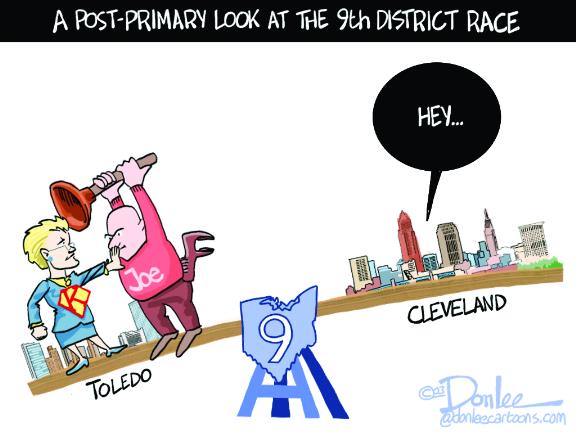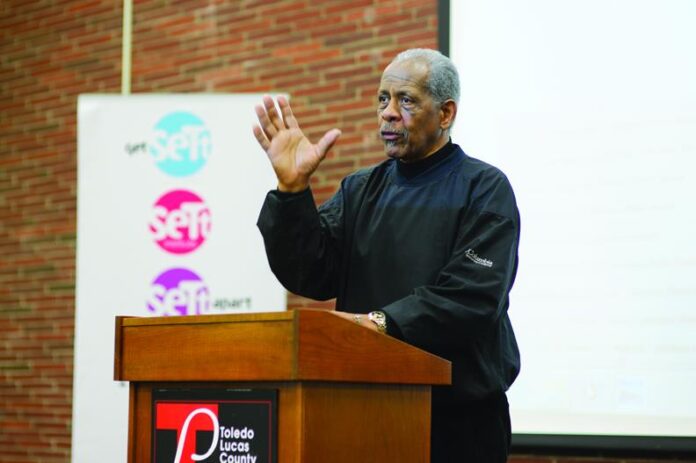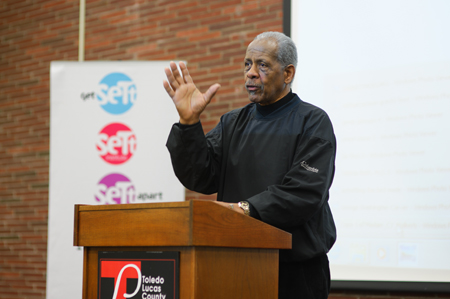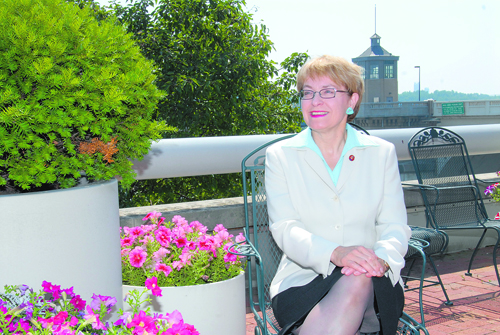When football coach Todd Drusback chose one of his wife’s students as the ball boy for his team, he didn’t realize how many lives he would impact.
Parker Inks, now 13, has multiple sclerosis, but that doesn’t mean he can’t help out on the field or off . His namesake nonprofit, Parker’s Purpose, gives up to $1,000 in grants to families with a child who has a life-altering illness or disability.
“[Parker] doesn’t look at [multiple sclerosis] as an affliction, he looks at it as a positive,” Drusback said.
Drusback, then coach of Fremont’s St. Joseph Central Catholic High School football team, gave Parker the position and never regretted it. Before long, Parker was instrumental to the team, giving players pep talks. In March 2008, however, Parker was hospitalized with respiratory problems around the same time his mother, Patti Inks, was undergoing cancer treatment.
“His dad called me the next day and said Parker was struggling; ‘He’s not himself, he’s not motivated,’” Drusback said.
Parker’s father told his son not to give up because he still had to fulfill his life’s purpose. Drusback, now coach at Rossford High School, went to visit Parker only to have a life-changing experience.
Although his movement was limited because of medical tubes, Parker squeezed Drusback’s hand when he saw him.
“It was one of those moments if you believe in divine intervention, it happened,” Drusback recalled.
The coach was inspired to do more for the Inks family. He sent out an email chain “and you wouldn’t believe the checks and the different things that started coming in the mail from all over the country,” he said.
Drusback also organized a spaghetti dinner and auction, serving 1,100 people.
“Todd and his wife just really stepped up. It had a massive impact on us,” Patti said. “He cares for Parker as if he were his own son.”
After spending a month in the hospital and crashing three times, Parker was released. However, the Drusbacks and the Inks decided their mission had only just begun.
“Why should it end here? There’s so many families out there that need assistance,” Drusback said.
He is president of the nonprofit. Since deciding to help other families, Parker’s Purpose has given $54,000, raised through fundraisers and donations, to 100 families.
The nonprofit helps children with all sorts of illnesses and disabilities, ranging from those with Down syndrome or autism to families with premature babies.
“Our focus is really broad because we know there are a lot of disabilities out there,” Drusback said.
The executive committee has quarterly meetings to decide which families get the grant money, with Northwest Ohio being the first priority. More people are applying, however, and the foundation would like to help, Drusback said.
“Our applications are just really increasing; we need to keep up with the funding,” Drusback said, adding that none of the staff is paid at Parker’s Purpose.
Every little bit helps a family with a sick child, Patti echoed. “When someone is going through medical struggles, especially when it’s your child, their focus is so much on their needs, but financial bur
dens are there,” she said. “It’s such a stressful thing to have financial burdens, whether you have health issues or not. The fact that the foundation can offer these grants, that’s a lot of relief to a family.”
For his part, Parker loves spreading the word about the nonprofit with his name. Patti, also secretary of Parker’s Purpose, remembered her son going from table to table at McDonald’s telling people about it.
“He’s a terrible teenager now and knows everything; he’s no different than any other teen,” she said with a laugh.
Parker still helps out at St. Joe’s in addition to Rossford High School.
To learn more, apply for a grant or donate, visit parkerspurpose.net. ✯
































